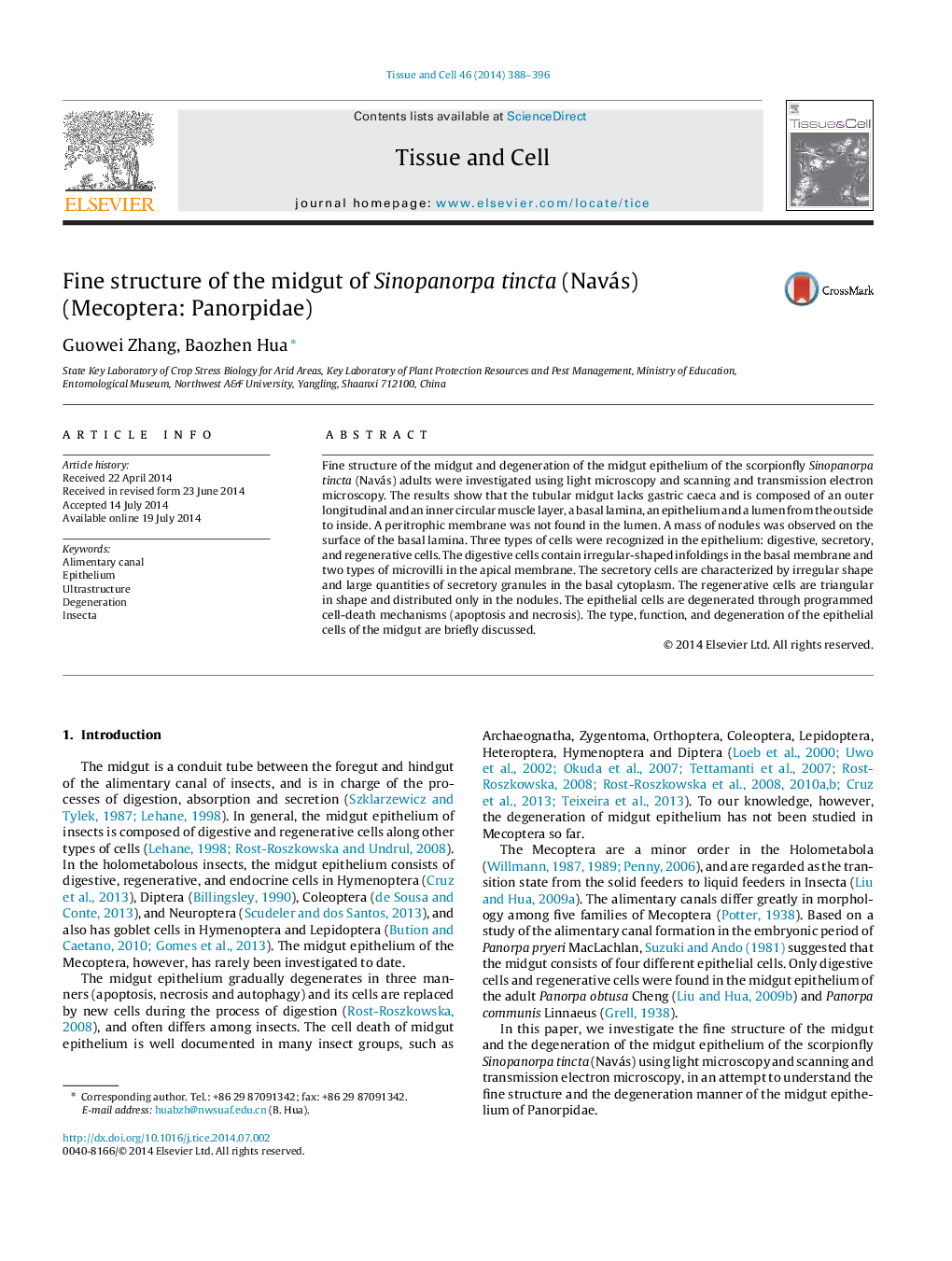| Article ID | Journal | Published Year | Pages | File Type |
|---|---|---|---|---|
| 2203782 | Tissue and Cell | 2014 | 9 Pages |
•The fine structure of midgut of Sinopanorpa tincta was investigated using light microscopy and scanning and transmission electron microscopy.•The midgut epithelium contains three types of cells: digestive, regenerative, and secretory cells.•The processes of apoptosis and necrosis are observed in the degenerating midgut epithelium.
Fine structure of the midgut and degeneration of the midgut epithelium of the scorpionfly Sinopanorpa tincta (Navás) adults were investigated using light microscopy and scanning and transmission electron microscopy. The results show that the tubular midgut lacks gastric caeca and is composed of an outer longitudinal and an inner circular muscle layer, a basal lamina, an epithelium and a lumen from the outside to inside. A peritrophic membrane was not found in the lumen. A mass of nodules was observed on the surface of the basal lamina. Three types of cells were recognized in the epithelium: digestive, secretory, and regenerative cells. The digestive cells contain irregular-shaped infoldings in the basal membrane and two types of microvilli in the apical membrane. The secretory cells are characterized by irregular shape and large quantities of secretory granules in the basal cytoplasm. The regenerative cells are triangular in shape and distributed only in the nodules. The epithelial cells are degenerated through programmed cell-death mechanisms (apoptosis and necrosis). The type, function, and degeneration of the epithelial cells of the midgut are briefly discussed.
Graphical abstractFigure optionsDownload full-size imageDownload high-quality image (473 K)Download as PowerPoint slide
